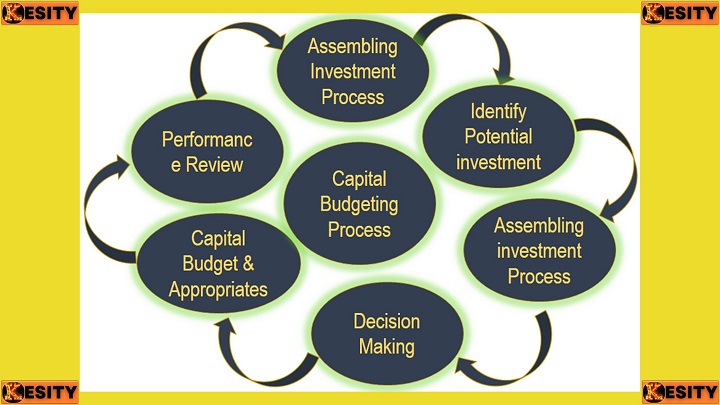Introduction
In the realm of investment appraisal, the profitability index (PI) serves as a valuable tool for assessing the attractiveness of potential projects. It is a financial metric that quantifies the relationship between the present value of cash inflows and the present value of cash outflows associated with a project. While the profitability index offers several advantages in aiding investment decisions, it is equally important to recognize its limitations and drawbacks. This essay delves into the various disadvantages of profitability index, shedding light on the intricacies that investors and decision-makers must consider.
The Concept of Profitability Index
The profitability index, also known as the profit investment ratio or value investment ratio, is calculated by dividing the present value of expected cash inflows by the present value of expected cash outflows. The formula for calculating the profitability index is:
PI = (Present Value of Cash Outflows) / (Present Value of Cash Inflows)
A PI greater than 1 signifies a potentially profitable investment, while a PI less than 1 implies that the project's costs outweigh its benefits. Despite its intuitive simplicity, the profitability index has several limitations that must be critically evaluated.
Disadvantages of Profitability Index
- Ignores Project Scale: One of the key disadvantages of profitability index is that it fails to account for the scale of investments. Two projects with different magnitudes of investment might have similar PI values, but the absolute returns generated could vary significantly.
- Bias towards Smaller Projects: The profitability index often favors smaller projects due to their lower initial investment, even if larger projects could yield higher absolute returns.
- Doesn't Account for Timing of Cash Flows: The index does not consider the timing of cash flows. Projects with shorter payback periods might appear more attractive based on the PI, but they may lack long-term profitability.
- Limited to Single Period: The PI primarily considers the cash flows within a single period, making it less suitable for projects with complex cash flow patterns spanning multiple periods.
- Ignores Cost of Capital: The profitability index does not incorporate the cost of capital or the required rate of return, which can lead to misjudgments in situations where discount rates vary.
- Assumes Reinvestment at PI Rate: The index assumes that cash inflows will be reinvested at the same rate as the PI, which may not hold true in real-world scenarios.
- Excludes Non-Monetary Factors: Non-monetary considerations such as environmental impact, social responsibility, and strategic alignment are not considered in the PI calculation, potentially leading to biased decisions.
- Limited Applicability: The profitability index is more suitable for comparing mutually exclusive projects with similar investment durations. It may not be effective for comparing projects with different time horizons.
- Dependent on Cash Flow Estimations: Like other financial metrics, the PI relies heavily on accurate cash flow projections. Inaccurate estimations can lead to flawed investment decisions.
- Neglects Project Interdependencies: When multiple projects are interdependent, the PI may fail to capture the synergistic benefits that arise from their combined implementation.

Implications of Profitability Index
The implications of the disadvantages of profitability index are far-reaching and can significantly impact investment decisions and overall project success. Decision-makers need to be cautious while relying solely on the PI metric and should consider a comprehensive evaluation of projects by integrating other appraisal techniques.
Advantages and Disadvantages of Profitability Index
Advantages:
- Simplicity and Ease of Calculation: The profitability index's straightforward formula allows for swift calculations, making it an attractive tool for initial project screenings. Its simplicity is particularly advantageous in situations where a quick assessment of multiple investment options is required.
- Comparative Analysis: The profitability index facilitates relative comparisons among different investment opportunities. This comparative aspect aids decision-makers in identifying projects with potentially higher returns in relation to their costs.
Disadvantages:
- Absence of Scale Consideration: One of the primary disadvantages of the profitability index is its failure to account for the scale of investments. This limitation can lead to skewed evaluations favoring smaller projects over larger ones, regardless of the potential absolute returns.
- Neglect of Timing of Cash Flows: The index overlooks the timing of cash flows, focusing solely on present values. As a result, it disregards the significance of cash flows occurring in different time periods, leading to incomplete evaluations of long-term profitability.
- Omission of Cost of Capital: The profitability index does not incorporate the cost of capital or the required rate of return, which is a critical factor in determining the feasibility of an investment. Consequently, the index might not accurately reflect the opportunity cost of capital for the organization.
- Exclusion of Non-Monetary Factors: Non-monetary considerations, such as environmental impact and social implications, are omitted from the profitability index. This can lead to decisions that fail to account for broader organizational goals and responsibilities.
- Sensitivity to Cash Flow Projections: The accuracy of profitability index calculations heavily depends on the precision of cash flow projections. Inaccurate estimations can lead to flawed decision-making, especially in cases where projections deviate from actual outcomes.
Implications of Profitability Index:
- Biased Investment Decisions: Relying solely on the profitability index can result in biased investment decisions, particularly for larger projects that might have lower PI values due to their higher initial costs. Additionally, projects with intricate cash flow patterns could be undervalued by the index, leading to suboptimal resource allocation.
- Neglect of Non-Monetary Factors: The implications of profitability index become more pronounced when non-monetary factors such as social responsibility or long-term brand reputation are critical. Focusing solely on the index might lead to projects being selected or rejected without adequately considering their broader impacts.
- Resource Allocation Challenges: If projects are chosen based solely on the profitability index, resources might be allocated to projects that seem immediately attractive but do not align with the organization's strategic goals. This can result in missed opportunities for projects with greater potential impact in the long run.

Major Advantage of Profitability Index:
- Quick Preliminary Screening: The primary advantage of the profitability index is its ability to facilitate rapid preliminary screenings of potential projects. Its simple calculation provides decision-makers with a swift initial overview of investment attractiveness, helping to identify projects worthy of further evaluation.
Benefits and Disadvantages of an Index:
- Benefit: Efficient Data Condensation: An index, like the profitability index, condenses intricate financial information into a single value. This condensation simplifies the comparison process and saves time by presenting complex data in an easily digestible format.
- Disadvantage: Oversimplification: A drawback of relying solely on an index is the potential oversimplification of intricate scenarios. The index might overlook critical factors or nuances that are vital for accurate decision-making. This oversimplification can lead to misinformed choices.
Disadvantages of Product Profitability Analysis:
- Indirect Cost Neglect: Product profitability analysis can fail to consider indirect costs associated with manufacturing and distribution. This omission can lead to inaccurate cost estimates, affecting the assessment of overall profitability.
- Shared Resource Oversights: When shared resources are involved in the production of multiple products, their costs might not be accurately attributed. As a result, certain products could appear more profitable than they truly are.
- Brand Reputation and Long-Term Effects: Focusing solely on financial metrics might lead to overlooking the long-term effects of a product on brand reputation. Neglecting these impacts can result in underestimating or overestimating a product's true profitability.
Assumptions of Profitability Index:
- Constant Discount Rates: The profitability index assumes a constant discount rate for all cash flows. However, in reality, discount rates might vary based on factors such as project risk or prevailing interest rates.
- Reinvestment at PI Rate: The index assumes that cash flows will be reinvested at the same rate as the profitability index. This assumption might not hold true, potentially leading to inaccurate future cash flow estimations.
- Accurate Cash Flow Projections: The profitability index relies on accurate projections of future cash flows. Fluctuations or deviations from projected cash flows can lead to distorted investment evaluations.
Factors Impacting Profitability:
- Competition: The level of competition within the industry directly influences a project's profitability. Intense competition can erode profit margins, affecting overall project viability.
- Market Demand Fluctuations: Changes in market demand can significantly impact a project's profitability. Products that were once in high demand might become obsolete, leading to reduced returns.
- Technological Advancements: Rapid technological advancements can shorten product lifecycles and render investments obsolete sooner than anticipated. This can impact profitability projections.
- Economic Conditions: Broader economic conditions, such as recessions or economic booms, can affect consumer spending patterns, directly influencing the profitability of projects.
Why Profitability Index is More Advantageous than NPV:
- Advantage of Rapid Comparison: The profitability index offers an advantage when comparing projects of varying sizes. Its quick calculation allows decision-makers to screen projects efficiently and identify those with the potential for higher returns.
- Trade-Off with NPV: While the profitability index offers speed in comparing projects, the net present value (NPV) provides a more comprehensive assessment. NPV considers the absolute value of cash flows and incorporates the cost of capital, resulting in a more accurate reflection of a project's potential return. The choice between the two depends on the balance between quick screening and thorough evaluation required for a given situation.

Conclusion
In conclusion, the profitability index is a valuable tool for evaluating investment opportunities, but it is not without its limitations. The disadvantages of profitability index, including its ignorance of project scale, timing, and cost of capital, as well as its simplification of complex project dynamics, call for a cautious approach in relying solely on this metric. Decision-makers must recognize its drawbacks and consider supplementary evaluation methods to ensure well-informed investment choices. The profitability index, when used in conjunction with other financial metrics, can provide a more holistic view of project feasibility and assist in making prudent investment decisions.



Comments are closed!